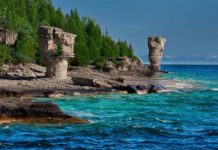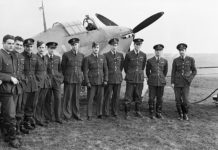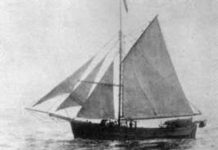In four arduous trips, Rae and crews mapped Canada’s north. Finding the link to Northwest Passage, he also learned the fate of missing Franklin Expedition.
There were clues to the future adventures of John Rae in his early childhood. The boy, born on September 30, 1813, spent much time outside, exploring the Orkney Island landscape in Scotland, climbing rocky precipices, sailing and learning to shoot. The skills he learned were put to good use when he grew up.
Generations of the Rae family worked for the Hudson’s Bay Company and John Rae continued the tradition after he was schooled. “In 1829 he went to Edinburgh to study medicine, and he qualified as a licentiate of the Royal College of Surgeons of Edinburgh in April 1833,” said R.L. Richards in the Dictionary of Canadian Biography Online. “That summer, by which time two of his older brothers had entered the service of the HBC, John was appointed surgeon to the HBC ship Prince of Wales for the voyage from England to Moose Factory (Ont.).”
Moose Factory Surgeon and Trading Post Clerk
Rather than returning to England, Rae stayed in Canada, become HBC’s surgeon and clerk at Moose Factory. (Moose Factory is in northern Ontario, near the southwestern tip of James Bay.) With not much medical work to do, Rae spent time in trading post operation and with the Cree natives, absorbing their way of life. His newfound skills were noticed by HBC officials in 1845 and he was offered the opportunity to lead a surveying expedition. Jumping at the chance, Rae made the trip across Ontario on foot to Toronto, to learn the trade of surveying.
Surveying the northern coastline of Canada, Rae and his teams spent months each year between 1946 and 1964 travelling “more than 10,000 miles on foot or in small boats,” said Richards. Overwintering in regions of the north, Rae learned methods of survival from the natives, from hunting for food and gathering natural medicines to building snow houses and getting around in the snow. The British authorities did not approve of the practical procedures shared by the explorer.
Snowshoes Aboard Ship
Advising a friend to take snowshoes on an expedition, Rae’s suggestion was ridiculed. “When the snowshoes were brought on board, there ‘was a shout of laughter and derision from the gallant but very inexperienced officers,’” said Pierre Berton in The Arctic Grail: The Quest for the Northwest Passage and the North Pole, 1818-1909 (Doubleday Canada, Toronto 2001). Rae’s friend proved his colleagues wrong and found the snowshoes very useful, “without them I should not have gone half a mile from the ship without much discomfort and labour.”
Franklin Expedition Fate
Before Rae undertook his expeditions, the search for the Northwest Passage was undertaken by Sir John Franklin and his crew. The ship and crew never returned. Franklin’s desperate wife funded several missions to try to find her husband or gather information on what happened to him; as well, a sizable reward was offered. During his trips, Rae was given information by the First Nations of what happened to the missing British explorer and his men. They were all deceased. “Rae heard the terrible story from native Inuit people with whom he had built up an affinity. Trapped by the ice and with no food, the men of the Royal Navy had resorted to cannibalism,” stated Clan MacRae in “People: John Rae, Arctic Explorer.”
With that information, Rae sailed for England in the fall of 1854 to inform the Admiralty. They and the widow Franklin were horrified. The British Navy attempted to conceal the facts, but a leaked announcement was made to the public. Rae was accused of having insufficient evidence and being in a rush to claim the reward. He was shunned. Delayed for two years, the arctic explorer finally received the £10,000 reward. Later explorers also confirmed John Rae’s evidence.
Link to the Northwest Passage
During his mapping trips, Rae located the final link to complete the Northwest Passage, the region that the Franklin expedition was searching for when their ship was inescapably frozen in the winter ice. Since Rae had brought the unacceptable news of the Franklin expedition’s fate, he was not given credit for his discoveries, instead the credit and knighthood given posthumously to Franklin.
Leaving the HBC in 1856, Dr. Rae found a bride, Catherine Jane Alicia Thompson, and the pair married in January of 1860. (They had no children.) Attending inquiries and investigations, Rae provided evidence and opinions to several studies. Rae rejoined the Hudson’s Bay Company a few years later, this time in a different capacity. Travelling throughout Upper Canada, the northeastern United States, the Prairies and into British Columbia, Rae (with his wife along side) provided surveying and mapping guidance for the routes of telegraph lines, advised on equipment, and pole-placement.
Merit Awards
Not one to settle in, when the Raes returned to England John Rae took up shooting again. “A first-class shot, he represented the London Scottish Regiment, in which he was long a volunteer, in the annual shooting competition at Wimbledon (London) and later at Bisley, Surrey,” said Richards.
While his most important findings were shuffled to the back of history books, Dr. Rae did receive appreciation over the years:
- 1852 Founders Gold Medal from the Royal Geographical Society
- 1853 Honorary Degree from McGill University in Montreal, Quebec
- 1856 Honorary LLD from Edinburgh University in Scotland
- 1880 Fellow of the Royal Society of London
- In his honour, several features were named after him in Canada’s arctic – Rae River, Rae Strait, Rae Isthmus, along with Mount Rae, Fort Rae and Rae-Edzo.
In London, England on July 22, 1893, John Rae died of an aneurysm. His body was returned to Scotland, where he was buried at St. Magnus Cathedral cemetery in Kirkwall, Orkney Islands.
Making strong alliances with the Inuit, Dr. John Rae achieved significant discoveries with little recognition as one of Canada’s greatest explorers.







